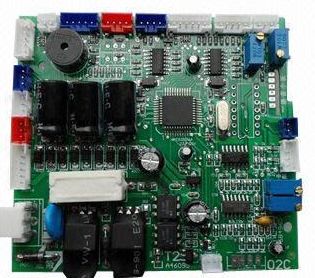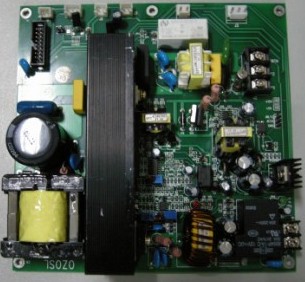
1. Flexibility and Reliability of Flexible Circuits
At present, there are four kinds of flexible circuits: single-sided, double-sided, multi-layer flexible board and rigid flexible board.
① Single sided flexible board is the PCB with the lowest cost and low requirements for electrical performance. Single sided flexible board shall be selected when wiring single sided PCB. The utility model has a layer of chemically etched conductive patterns, and the conductive pattern layer on the flexible insulating substrate is a calendered copper foil. The insulating substrate can be polyimide, polyethylene terephthalate, aramid fiber ester and polyvinyl chloride.
② The double-sided flexible board is a conductive pattern made of a layer of etching on both sides of the insulating base film. The metallized hole connects the figures on both sides of the insulating material to form a conductive path to meet the design and use functions of flexibility. The covering film can protect the single and double sided wires and indicate the location of the components.
③ Multilayer flexible board is to laminated three or more layers of single-sided or double-sided flexible circuits together to form metallized holes by drilling L and electroplating to form conductive paths between different layers. In this way, complex welding processes are not required. Multilayer circuits have huge functional differences in terms of higher reliability, better thermal conductivity and more convenient assembly performance. When designing PCB layout, the interaction of assembly size, layers and flexibility should be considered.
④ The traditional rigid flexible plate is composed of rigid and flexible base plates selectively pressed together. The structure is compact, and the conductive connection is formed by metallized nickel L. If a printed circuit board has both front and back components, rigid flexible board is a good choice. However, if all the components are on one side, it will be more economical to choose double-sided flexible board and laminate a layer of FR4 reinforcement material on its back.
⑤ The flexible circuit with hybrid structure is a multilayer board, and the conductive layer is composed of different metals. An 8-layer board uses FR-4 as the medium of the inner layer and polyimide as the medium of the outer layer. Leads stretch out from three different directions of the main board. Each lead is made of different metals. Constantan alloy, copper and gold are used as independent leads. This kind of hybrid structure is mostly used in the case of the relationship between electrical signal conversion and heat conversion and the harsh low temperature of electrical performance, which is the only feasible solution.
It can be evaluated by the convenience and total cost of the interconnection design to achieve the best performance price ratio.
2. Economy of Flexible Circuits
If the circuit design is relatively simple, the total volume is small, and the space is suitable, the traditional internal connection mode is much cheaper. If the circuit is complex, processes many signals or has special electrical or mechanical performance requirements, flexible circuit is a good design choice. When the size and performance of applications exceed the capacity of rigid circuits, flexible assembly is the most economical. A 12mil pad with 5mil through-hole inside and a flexible circuit with 3mil lines and spacing can be made on one film. Therefore, it is more reliable to directly mount PCB chips on thin films. Because there is no flame retardant that may be the source of ion drilling pollution. These films may be protective and cured at higher temperatures to obtain higher glass transition temperatures. The reason why flexible materials save cost compared with rigid materials is that connectors are not required.
High cost raw materials are the main reason for the high price of flexible circuits. The price of raw materials varies greatly. The cost of raw materials used in the polyester flexible circuit with the lowest cost is 1.5 times that of raw materials used in the rigid circuit; High performance polyimide flexible circuits are up to 4 times or more. At the same time, the flexibility of materials makes it difficult to carry out automatic processing in the manufacturing process, which leads to a decline in output; Defects are easy to appear in the final assembly process, including peeling off flexible accessories and line breakage. This is more likely to happen when the design is not suitable for the application. Under the high stress caused by bending or forming, it is often necessary to select reinforcement materials or reinforcing materials. Although the raw material cost is high and the manufacturing is troublesome, the foldable, bendable and multi-layer panel functions will reduce the overall component size, the materials used and the total assembly cost.
The flexible circuit industry is in a small but rapid development. Polymer thick film process is an efficient and low-cost production process. This process selectively screen printed conductive polymer ink on cheap flexible substrate. The representative flexible substrate is PET. Polymer thick film conductor includes silk screen metal filler or carbon powder filler. The polymer thick film method itself is very clean, using lead-free SMT adhesive, without etching. Because of its addition process and low cost of substrate, the price of polymer thick film circuit is 1/10 of that of copper polyimide film circuit; It is 1/2~1/3 of the price of rigid circuit board. The polymer thick film method is especially suitable for the control panel of PCB equipment. For mobile phones and other portable products, the polymer thick film method is suitable for converting the components, switches and lighting devices on the printed circuit board into polymer thick film circuit. It not only saves costs, but also reduces energy consumption.
Generally speaking, flexible circuits do cost more than rigid circuits. In many cases, flexible plates have to face the fact that many parameters exceed the tolerance range when they are manufactured. The difficulty in manufacturing flexible circuits lies in the flexibility of materials.
3. Cost of Flexible circuit board
In spite of the above cost factors, the price of flexible assembly is declining and becomes close to the traditional rigid circuit. The main reasons are the introduction of new materials, the improvement of production process and the change of structure. The current structure makes the thermal stability of the product higher, and few materials do not match. Some newer materials can make more precise lines due to the thinner copper layer, making the components lighter and more suitable for small space. In the past, copper foil was adhered to the media coated with adhesive by rolling process. Now, copper foil can be directly generated on the media without adhesive. These technologies can obtain several micrometer thick copper layers, and precision lines with a width of 3m.1 or even narrower. The flexible circuit without some adhesives has flame retardancy. This can not only accelerate the uL certification process, but also further reduce the cost. PCB solder mask and other surface coatings further reduce the cost of flexible assembly.





